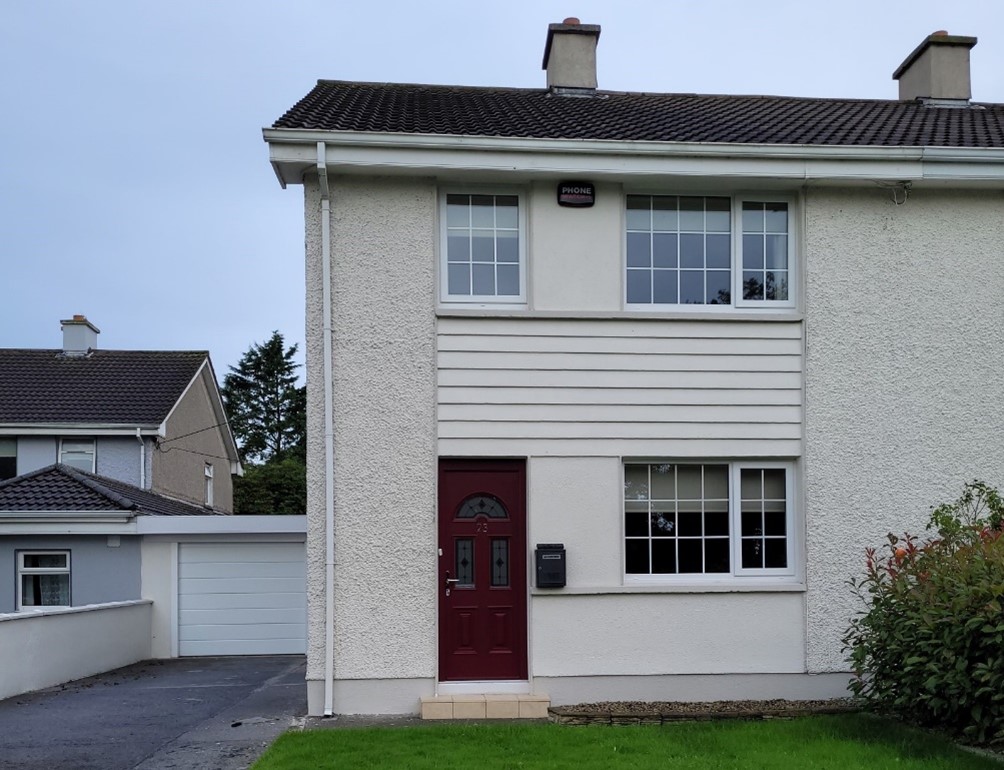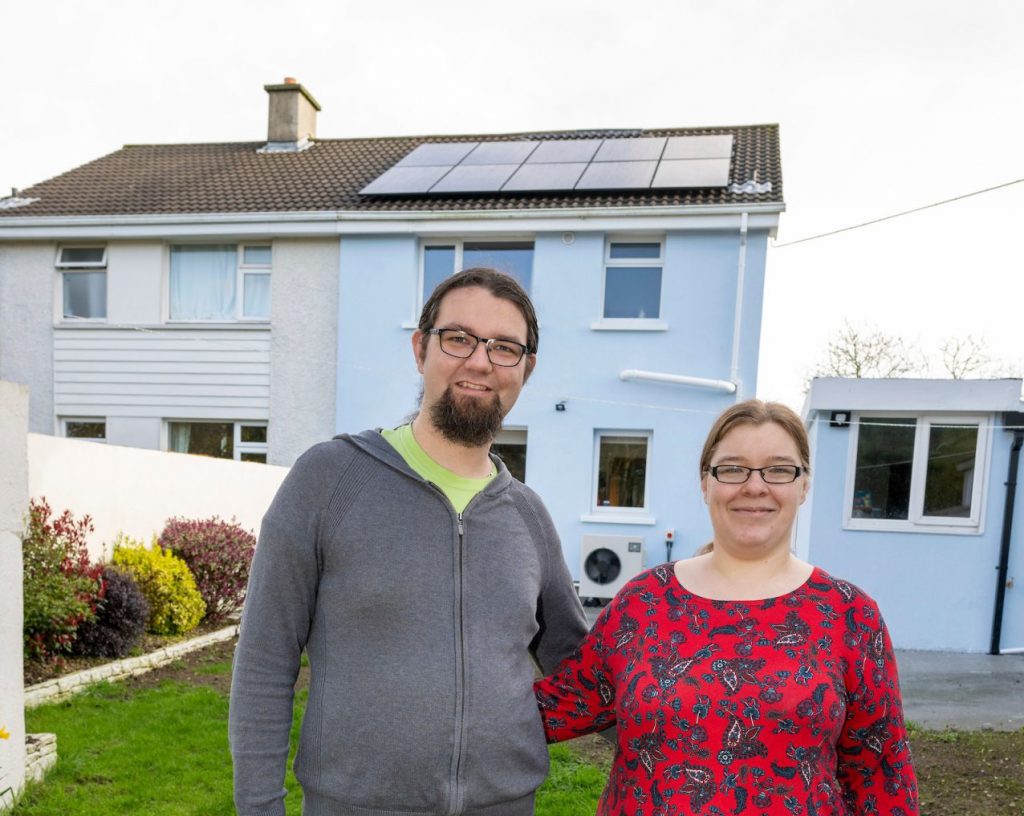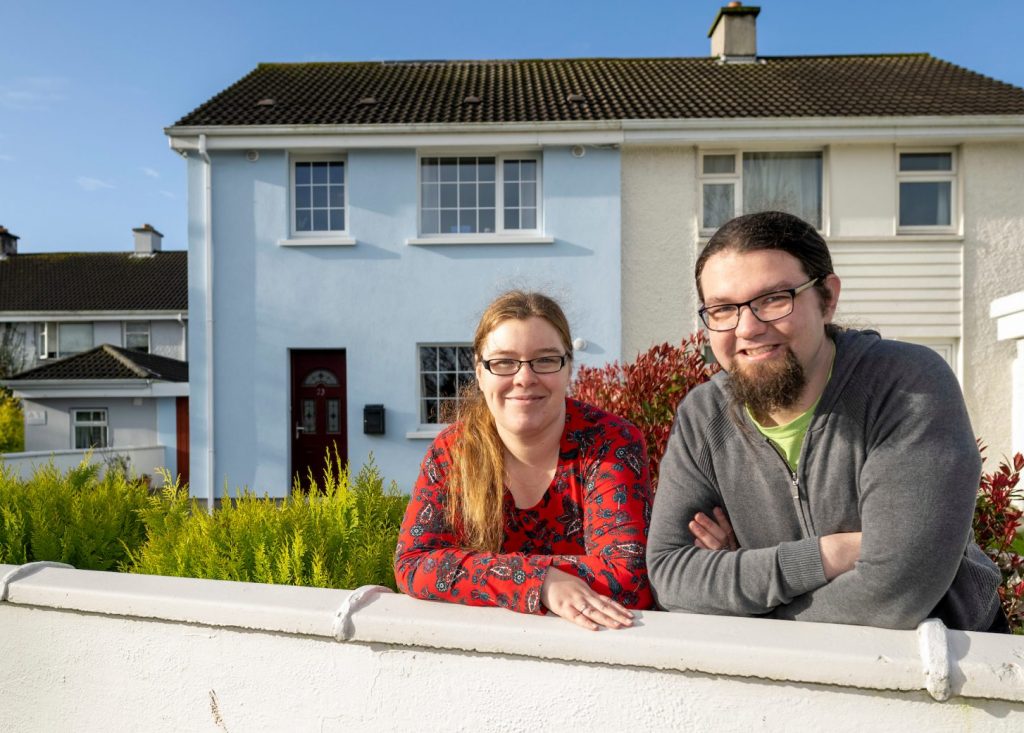The Story
After purchasing the property, the first thing they wanted to do was to retrofit the house so they could have a modern heating system installed. “We wanted to make sure this house has the best energy standards because it’s the best thing for us and it’s the best thing for the environment.”

Having heard a lot of good things about Electric Ireland Superhomes, they found the process to be easy working with us. They were happy with the fact that we handled a lot of the project management, sourced the contractor and secured the maximum grants for their home via the SEAI One Stop Shop scheme which was a huge plus for them.
“Our engineer Mike O’Rourke was really good at any questions we had, like about the heat pump, about how much the external insulation was going to change the appearance of the house.”
The Measures
A range of home energy upgrade measures were incorporated in the retrofit design. The five key aspects of this retrofit were; a ‘fabric first’ approach with significant insulation improvements, air to water heat pump and heating system to provide sustainable heating and hot water, an airtightness strategy followed by mechanical ventilation, and solar PV.
The external walls are of cavity construction and the roof is on timber truss construction. External and attic insulation was recommended for this home.
An air source heat pump is an essential measure in an Electric Ireland Superhomes’ retrofit so the existing heating system, a Stanley solid fuel range was removed, and a heat pump installed with full controls upgrade – this delivers a comfortable, constant temperature in every room throughout the house of between 18 to 21 degrees.
In regard to airtightness, the existing windows & doors in the house have been fully replaced in recent years and in good condition, therefore this retrofit measure was not required to meet the energy performance targets. Electric Ireland Superhomes recommended the chimneys are sealed to reduce draughts and therefore improve airtightness. The client chose to completely remove the chimneys during the works to gain space in two rooms. This was at an optional additional cost over that of the retrofit.
To improve the indoor air quality of the home to better control humidity, a demand-controlled ventilation was installed. Demand control ventilation (DCV) works to provide the optimal level of ventilation by balancing air quality with energy usage. Humidity levels are monitored and used as an indicator of air quality. As humidity levels rise (due to people breathing, cooking, washing etc.) the ventilation system reacts by ventilating the house, at a higher rate, only when needed (typically < 50% of the time) and continues to ventilate at a lower level when humidity levels are good, therefore using less energy. The system is designed to provide the right amount of fresh air, where it is needed and when it is needed. The principal of operation is humidity-controlled air inlets, that consistently adjust the vents based on the relative humidity in that room and with fans and air extraction points activated / boosted by humidity levels and/or presence sensors.
The final measure was an optional measure that Electric Ireland Superhomes recommended and was requested by the customer was a Solar PV System. 10 Solar PV panels (3.75kWp) were installed with a 2.4kWh Battery, which pushed the BER rating of this home into the highest BER band.
The Results
“At all times we had full choice; we could have chosen not to put solar on the roof. We could have chosen only to do the minimal work necessary to get the grades that we need to get the grants, but we were given all the options and we’ve never really felt that we could contribute a lot to making the world a better place having an efficient home and doing that little bit is really important to us.”

Speaking about the Electric Ireland Superhomes approved contractor Chris from CW Xterior Solutions:
“Our contractor Chris, he was juggling a lot of different companies, doing a lot of different types of work. He just managed everything for us. So, thanks to working with Electric Ireland Superhomes, we didn’t have to worry about any of that, which is really great.”

Junia & Feichín explained how the air to water heat pump has changed the house “It keeps the house at a really nice, constant temperature which is a new experience for us. The control it gives is amazing.”
The combined retrofit measures produced remarkable results. The BER rating of the home went from an E2 to an A1 rating.
The cost of this whole house heat pump led retrofit was €69,650, less SEAI grants received €23,000, final cost after grant €46,650 (cost excluding professional fees).
The couple commented that “the house has gone all the way up to A1 BER rating, which really surprised us, because we didn’t think a house from the seventies could get an A1.”
Lead Contractor: CW Xterior Solutions Ltd.
Sub Contractors: Caldor Solar (Solar PV), Airflow Ireland Ltd (Heat Pump)
Equipment Suppliers: Mitsubishi (Heat Pump) and Aereco (Demand Control Ventilation)

